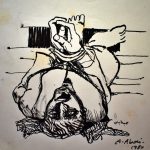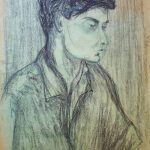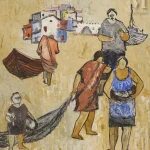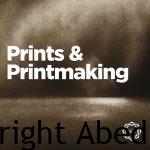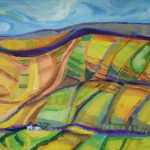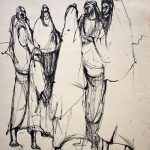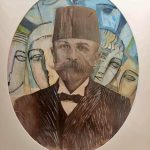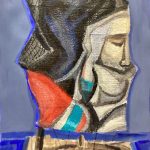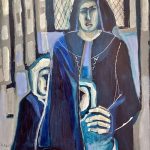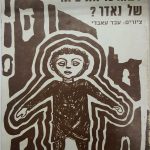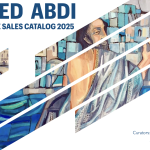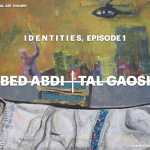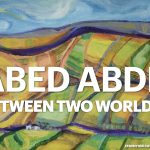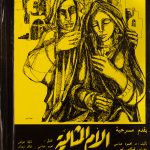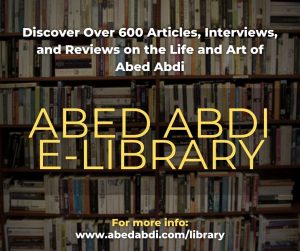
by dr. Amir A. Abdi / Site Admin
Explore the Abed Abdi Media & Press Archive – 600+ Articles, Interviews & Reviews
The newly opened Abed Abdi Art Library is now live online, offering a structured and multilingual archive that traces over six decades of artistic activity, social commentary, and cultural legacy of the Palestinian artist Abed Abdi. This expansive collection contains more than 600 published materials—articles, interviews, critical essays, catalog texts, and press reports—spanning from 1962 to 2025, and available in Arabic, Hebrew, English, German, Spanish, and Hungarian.
The archive documents every major chapter in Abdi’s life and work: from murals, exhibitions, and public monuments to his social and political advocacy for Palestinian artists. The articles include commentary, criticism, and news coverage about Abdi’s exhibitions and projects, as well as interviews and original writings by the artist himself.
The earliest known article in the library dates back to 21 January 1962, published in the Hebrew newspaper Kol HaAm, covering the opening of Abdi’s first solo exhibition in Tel Aviv. Just five days later, on 26 January 1962, Gila Adam—curator and art writer—published the first formal critique of his work. These early entries mark the beginning of a lifelong public engagement with Abdi’s evolving practice.
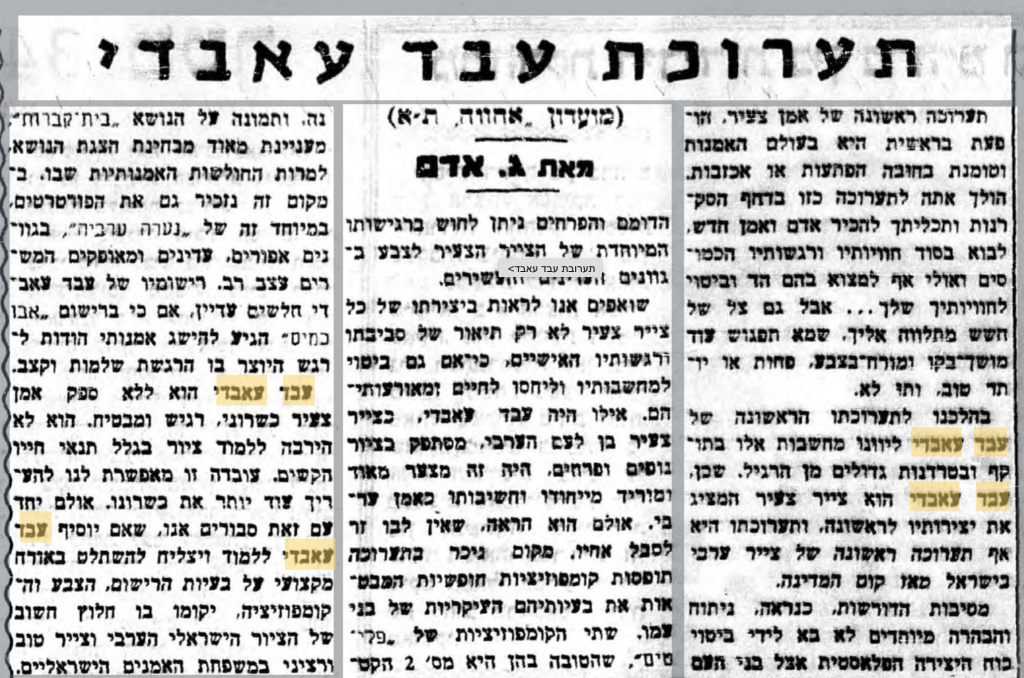
On 5 August 1966, Al-Ittihad published the first recorded interview with Abdi. At the time, he was on his first summer leave from the Dresden Academy of Fine Arts, having completed two years of study. When asked, “Did you grow up?” he answered, “I grew up in two years, but in art I grew eight years.” He continued, “I learned and took from European subjects, but I retained myself. In the past, I used to give the painting the spirit of beauty, but now I see the story of the land and nature. I want to give even the stone its role, and liberate myself from unnecessary things. For example, in a painting showing a human being defending the land, I emphasized the hands and the eyes and freed myself from the filler and side details. I now emphasize the content.”
An important milestone was marked on 21 January 1972 with the publication of “The Artist Abed Abdi Returns to His Homeland” in Al-Ittihad. The article confirmed the completion of his studies in East Germany and his involvement in the creation of a 30-meter-wide, 11-meter-high mural at the Dresden Cultural Palace. For this, Abdi received both a monetary honorarium and the title “Active in Socialist Work.” The article also noted his participation in a 1966 group exhibition at the Dresden Academy, a solo show later during his studies, and a dedicated mural project at the Academy symbolizing international friendship. The article concluded with an optimistic outlook for his future contributions to the art scene in Palestine, particularly through public mural projects and youth mentorship.
On 9 February 1973, Abdi published his first article as a writer in Al-Ittihad, titled “The Ballad of the Children in the Life of the Cross,” in honor of Bertolt Brecht’s 75th birthday. On 13 April 1973, he published another significant article titled “Picasso: The Artist of the 20th Century,” a reflective tribute following Picasso’s death. Abdi reviewed Picasso’s work and legacy, discussing pieces like Guernica and his engagement with themes of war and peace.
In 1978, Al-Ittihad published a moving article by author Ibrahim Malek on the Land Day Monument. Malek wrote, “Only few artworks receive the right to eternal life and become deeply rooted in the people’s minds and emotions, turning into sacred symbols. We do not exaggerate when we say that the Land Day Monument has earned this right.”
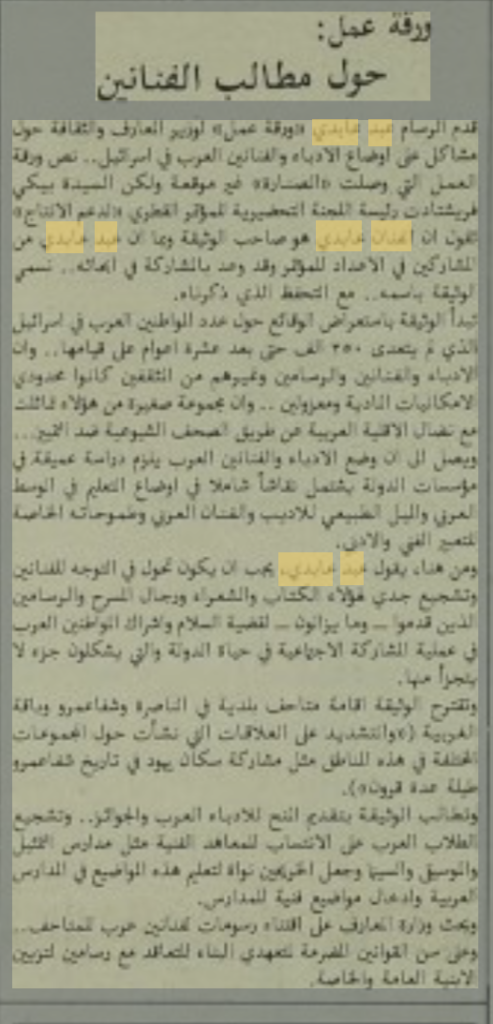
In 1987, Al-Sinnara published an article that revealed a significant document penned by Abdi ahead of a national conference on creativity. The statement called on Israeli state institutions to seriously engage with the reality facing Arab writers and artists. It began by noting: “The number of Arab citizens in Israel did not exceed 250,000 even after ten years since its establishment… Writers, artists, painters, and other intellectuals were materially limited and isolated… A small group among them identified with the struggle of the Arab minority through the communist press against discrimination.” The document continued with proposals for establishing municipal museums in Arab towns, awarding grants to Arab artists, promoting arts education in Arab schools, and legislating that developers contract artists to decorate public spaces.
On 21 November 2001, Al-Ittihad published a commentary by Yousef Heidar, who wrote extensively on Abdi’s many mural works in Ibillin. He stated: “He surprises us every time. After his magnificent mural at the entrance of the local council building in Ibillin, he has amazed us once again with a refined, expressive artwork… The work of the great Palestinian artist Abed Abdi has become a living and conscious part of the lives of many students, people, and artists. In the design of his sculptures and murals, there is life, steadfastness, hope, and renewal.”
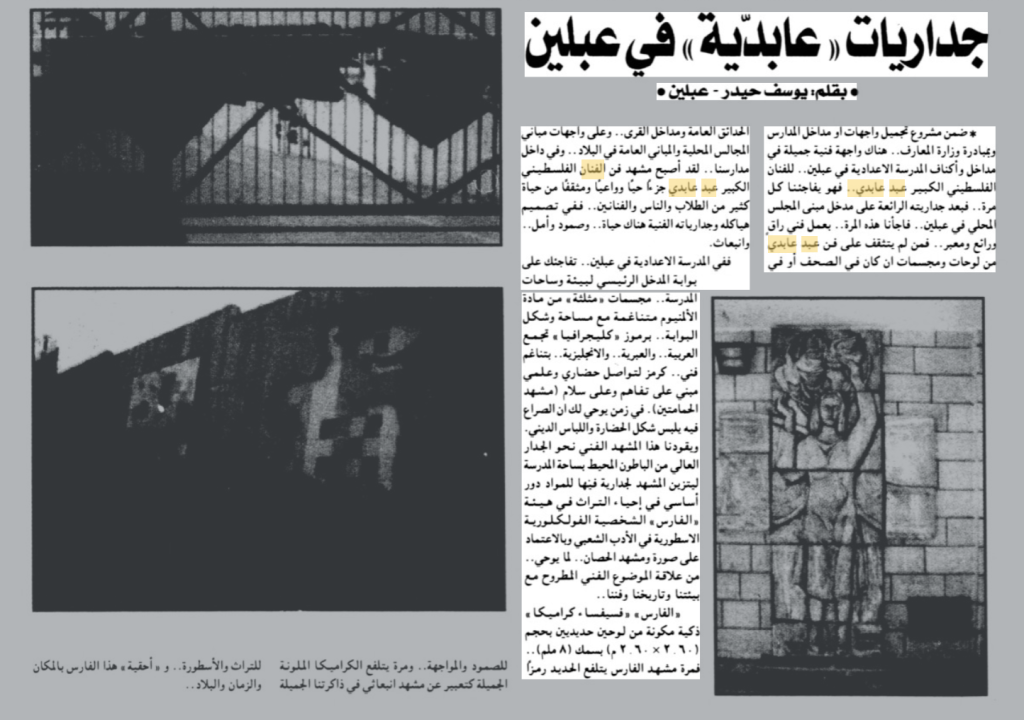
In Haaretz on 8 October 2010, art critic Dr. Smadar Shefi published a profile titled “Abed Abdi: An Essential Episode in the History of Israeli Art,” recognizing the historical and cultural depth of Abdi’s contributions to the Israeli and Palestinian art landscapes.
During the COVID-19 pandemic, the Beirut-based magazine Selections published “The Diary of an Artist in Interesting Times” (2020), where Abdi reflected on isolation, artmaking, and memory during global lockdowns.
In Haaretz‘s Twilight Zone section on 22 February 2013, journalists Gideon Levy and Alex Levac published an article titled “Arab-Israeli in Haifa Uses Art to Help Palestinian Refugee Sister.” The article revisited Abdi’s student years in Dresden, noting: “Abdi studied seven years at the Dresden Academy of Fine Arts, under the guidance of Lea Grundig, a refugee like him: she was a German communist who fled with her Jewish husband from the Nazis to Palestine. She stayed here for about six years and returned to East Germany; he fled from Israel, from Zionist occupation, until he returned and went to study in Germany.”
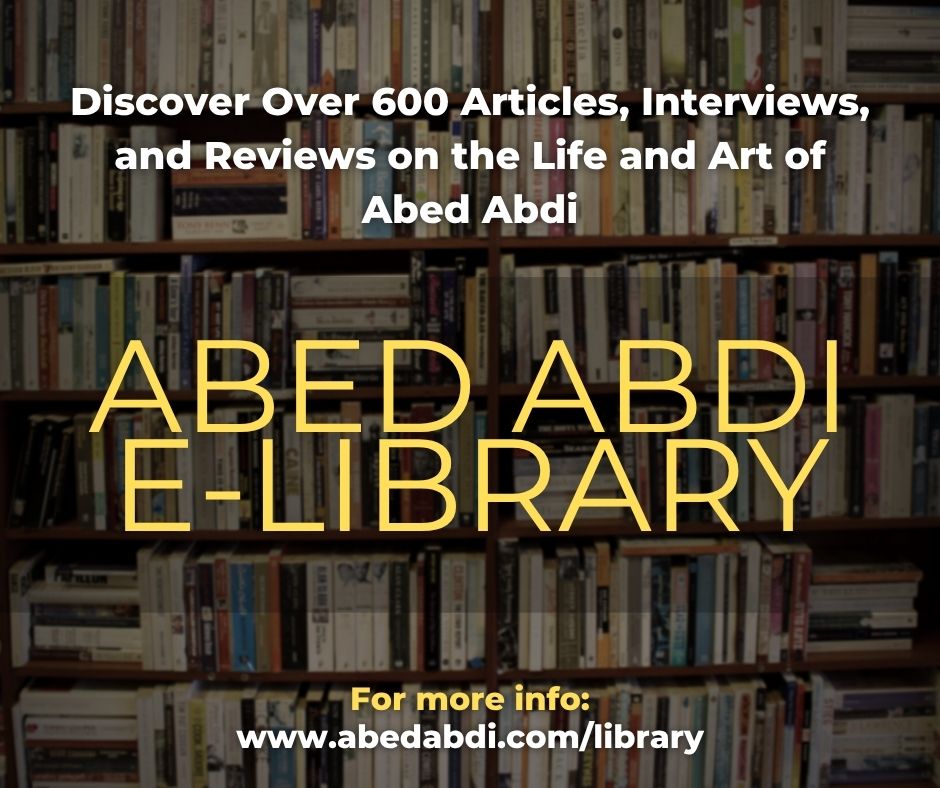
This connection between Abdi and Grundig is also explored by art historian Tal Ben Zvi in her academic book The Holocaust and the Nakba: A New Grammar of Trauma and History. In her chapter, she draws parallels between the artists’ experiences of persecution and exile, highlighting their respective commitments to art as a medium of remembrance and resistance.
An additional critical article was published by Rawda Ghanayem in Al-Madina newspaper, exploring Abdi’s conceptual art series Memory Drawers through the neighborhoods of Wadi al-Nisnas and Wadi al-Salib. Ghanayem concluded: “The drawers are not only a tool for preserving heritage—they serve as a testimonial and provoke reflection on the personal dimensions of history. Each drawer holds literary echoes, referenced by poets, authors, and storytellers. It is an eternal box of memories that tells personal stories of those who lived here, delivering to us the story of a steadfast people resisting erasure.”
The most recent entry in the archive comes from 2024. In an interview broadcast on Radio Haifa under the title “The 82-Year-Old Artist from Haifa: ‘Refugeehood Has Accompanied Me All My Life,’” Abdi spoke with candor about his lifelong experience of exile, belonging, and creativity.
The Abed Abdi Art Library offers a rare and valuable window into these dialogues. It is not only a resource for art historians and cultural researchers but also an accessible platform for the general public, particularly those interested in Palestinian heritage, visual culture, and social memory. The library’s six-language structure, historical depth, and archival richness make it a living chronicle of a life devoted to the art of resistance, belonging, and storytelling.
KeyWords:
abed abdi digital archive, abed abdi press articles, palestinian artist media archive, abed abdi interviews, art criticism about abed abdi, abed abdi catalogues, exhibitions reviews abed abdi, abed abdi murals, abed abdi biography, abed abdi artistic legacy, arab artists in israel, abed abdi publications, art documentation palestine


